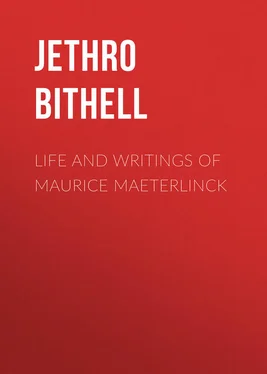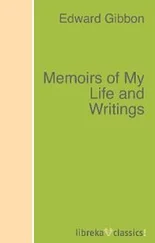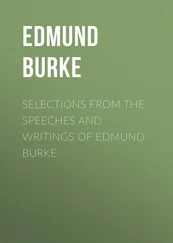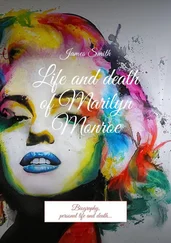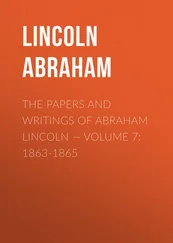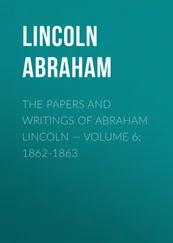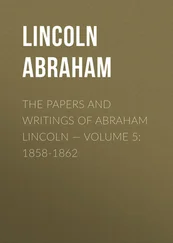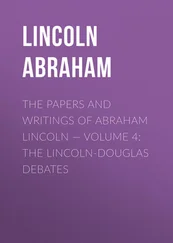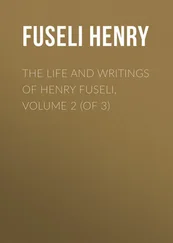Jethro Bithell - Life and Writings of Maurice Maeterlinck
Здесь есть возможность читать онлайн «Jethro Bithell - Life and Writings of Maurice Maeterlinck» — ознакомительный отрывок электронной книги совершенно бесплатно, а после прочтения отрывка купить полную версию. В некоторых случаях можно слушать аудио, скачать через торрент в формате fb2 и присутствует краткое содержание. ISBN: , Жанр: foreign_antique, foreign_prose, на английском языке. Описание произведения, (предисловие) а так же отзывы посетителей доступны на портале библиотеки ЛибКат.
- Название:Life and Writings of Maurice Maeterlinck
- Автор:
- Жанр:
- Год:неизвестен
- ISBN:http://www.gutenberg.org/ebooks/38917
- Рейтинг книги:3 / 5. Голосов: 1
-
Избранное:Добавить в избранное
- Отзывы:
-
Ваша оценка:
- 60
- 1
- 2
- 3
- 4
- 5
Life and Writings of Maurice Maeterlinck: краткое содержание, описание и аннотация
Предлагаем к чтению аннотацию, описание, краткое содержание или предисловие (зависит от того, что написал сам автор книги «Life and Writings of Maurice Maeterlinck»). Если вы не нашли необходимую информацию о книге — напишите в комментариях, мы постараемся отыскать её.
Life and Writings of Maurice Maeterlinck — читать онлайн ознакомительный отрывок
Ниже представлен текст книги, разбитый по страницам. Система сохранения места последней прочитанной страницы, позволяет с удобством читать онлайн бесплатно книгу «Life and Writings of Maurice Maeterlinck», без необходимости каждый раз заново искать на чём Вы остановились. Поставьте закладку, и сможете в любой момент перейти на страницу, на которой закончили чтение.
Интервал:
Закладка:
"Then they went out of the inn, with pots and pitchers and loaves of wheaten bread for their companions who had stayed round the man with the white beard, he who was waiting amid the lances.
"The street being still deserted, the captain sent horsemen behind the houses, in order to keep a hold on the hamlet from the side of the fields, and ordered the lansquenets to bring before him all infants of two years old or over, that they might be massacred, even as it is written in the Gospel of Saint Matthew."
Maeterlinck in this story has simply turned an old picture, or perhaps several pictures, into words. The cruelty of the massacre does not affect us in the least; the style is such that anyone who has seen the Breughels' paintings understands at once that a series of fantastic pictures, which have no relation whatever to fact, or logic, or history, are being drawn; not dream-pictures, but scenes drawn with the greatest clearness, and figures standing out boldly in flesh and blood:
"But he replied in terror that the Spaniards had arrived, that they had set fire to the farm, hanged his mother in the willow-trees, and tied his nine little sisters to the trunk of a great tree."
(You are to see the woman hanging in the willow-trees, the deep green and any other colours you like… Never mind about the pain the little girls must be suffering.)
"They came near a mill, on the skirts of the forest, and saw the farm burning in the midst of the stars." (This is a flat canvas, remember.) "Here they took their station, before a pond covered with ice, under enormous oaks…
"There was a great massacre on the pond, in the midst of huddling sheep, and cows that looked on the battle and the moon."
This transposition of the mood ( Stimming ) of old paintings (not by any means word-painting or descriptive writing) is the secret of much of the verse of two other Flemings – Elskamp and Verhaeren. It is an immense pity that Maeterlinck did not write more in this fashion; many of us would have given some of his essays for this pure artistry. Not that he threw his gift of seeing pictures away; he made good use of it even when he had' given up the direct painting of moods for the indirect suggestion of them (or, in other words, when from a realist he had become a symbolist).
Maeterlinck, at the time he wrote The Massacre of the Innocents , must have been trying his hand at various forms of literature. Adolphe van Bever in his little book publishes a letter from Charles van Lerberghe to himself which shows that the two young poets corrected each other's efforts. The letter, too, draws a portrait of Maeterlinck as he appeared at this time:
"Maeterlinck sent me verses, sonnets principally in Heredia's manner, but Flemish in colour, short stories something like Maupassant's, a comedy full of humour and ironical observation, and other attempts. It is characteristic that he never sent me any tragedy or epic poem, never anything bombastic or declamatory, never anything languorous or sentimental either. Neither the rhetorical nor the elegiac had any hold on him. He was a fine handsome young fellow, always riding his bicycle or rowing, the kind of student you would expect to see at Yale or Harvard. But he was a poet besides being an athlete, and his robust exterior concealed a temperament of extreme sensitiveness…"
It was certainly van Lerberghe's own idea that it was he who had trained Maeterlinck; and Maeterlinck would certainly admit it. It was van Lerberghe, too, more than any other, who won Maeterlinck over to symbolism. But Maeterlinck met Mallarmé personally during his stay in Paris; in short, various influences worked upon him to turn him from Heredia's and Maupassant's manner to that of Mallarmé's disciples.
The tide was flowing in that direction. Verhaeren was soon to desert the Parnassian camp. 17 17 Verhaeren's first vers libres appeared in book form in January, 1891 (printed in December, 1890) in Les Flambeaux noirs . But in May, 1890, he had published, in La Wallonie , a poem in vers libres ; and this is dated 1889.
Henri de Régnier was on the point of doing so. 18 18 Poèmes anciens et romanesques , his first book of acknowledged symbolism, did not appear till 1890, but the poems which compose it were written between 1887 and 1888.
Two years before Jean Moréas had published his first book: Les Syrtes (December 1884). In 1885 René Ghil's Légendes d'âmes et de sangs and Jules Laforgue's Les Complaintes came out; in 1886, René Ghil's Le Traité du Verbe , Jean Moréas's Les Cantilènes , Rimbaud's Les Illuminations , Vielé-Griffin's Cueille d'Avril . In the pages of La Vogue , launched on the 11th of April, 1886, were appearing some of the poems which Gustave Khan was to publish in 1887, as Les Palais Nomades . All these books are landmarks in the onward path of symbolism; 19 19 It was in 1886, too, that Gustave Kahn with the collaboration of Jean Moréas and Paul Adam, founded the review Le Symboliste .
not because they are all, technically, symbolistic, but because each is in a new manner.
Closely associated with the birth and growth of symbolism is the question of the origin of vers libres . French authorities differ: some credit Jules Laforgue with its invention; others a Polish Jewess, Marie Kryzinska, who seems to have attempted to write French poetry; and two of the French poets who were the first to use the medium, Francis Vielé-Griffin and Gustave Kahn, might dispute the glory of being its originators. As to Francis Vielé-Griffin, he is said to have introduced it by translations of Walt Whitman; 20 20 A translation of Whitman's Enfants d'Adam , by Jules Laforgue, appeared in La Vogue in 1886. Stuart Merrill personally handed this translation to Whitman, who was delighted. (See Le Masque , Série ii, Nos. 9 and 10, 1912). Vielé-Griffin's first translation of Whitman appeared in November, 1888, in. La Revue indépendante ; another translation of his appeared afterwards in La Cravache . A translation of Whitman had appeared in the Revue des deux Mondes in the reign of Napoleon III.
or, in other words, the French vers libre is an imitation of Whitman's lawless line. Now this is a matter which, as we shall see, directly concerns Maeterlinck; so it will not be extraneous to our subject to discuss here the question of the origin of vers libres .
Marie Kryzinska may be ruled out to begin with. Her poetry was laughed at; nobody took her seriously – at the most she served as an engine of war against Gustave Kahn, who was then anything but popular. As to Jules Laforgue, he was very much admired, and his influence is beyond question; but what he attempted in his verses was something quite different to what the verslibristes proper attempted: it was rather a manner of compressing his ideas than of expressing them musically. As for Walt Whitman and Vielé-Griffin, it is true that translations had appeared, but they had not attracted the least notice, and no one betrayed the slightest interest for the technique of the American poet. As a matter of fact, few people knew anything about Whitman, beside the two poets of American birth, Francis Vielé-Griffin and Stuart Merrill; and both at that time, although of course their manner was new, were writing, as far as form is concerned, regular verses. Another of the first poets to write free verses, the Walloon poet, Albert Mockel, was not unacquainted with Whitman; he had read American Poems selected by William M. Rossetti . Now Mockel, as editor of La Wallonie , which he had founded to defend the new style, was connected with the whole group of symbolists and verslibristes , all of whom, practically, were regular contributors to the review. And La Wallonie was hardy: it lasted seven years; a great rallying ground of the young fighters before the advent of the Mercure de France , the second series of La Vogue , and La Plume . But, as it happened, Mockel was not in the least inspired by the selections from Whitman in Rossetti's collection; they made the impression on him of being Bible verses rather than real verses. One poet Whitman's lawless line did directly influence; and this was Maeterlinck, whose rhymeless verse in Serres Chaudes was written under the inspiration of Leaves of Grass . But Serres Chaudes did not appear till 1889, and even then the majority of the poems in the volume were rhymed and regular; so that it could hardly be claimed that Maeterlinck was the originator of the vers libre . 21 21 He himself told Huret that La Princesse Maleine was written in vers libres concealed typographically as prose.
Интервал:
Закладка:
Похожие книги на «Life and Writings of Maurice Maeterlinck»
Представляем Вашему вниманию похожие книги на «Life and Writings of Maurice Maeterlinck» списком для выбора. Мы отобрали схожую по названию и смыслу литературу в надежде предоставить читателям больше вариантов отыскать новые, интересные, ещё непрочитанные произведения.
Обсуждение, отзывы о книге «Life and Writings of Maurice Maeterlinck» и просто собственные мнения читателей. Оставьте ваши комментарии, напишите, что Вы думаете о произведении, его смысле или главных героях. Укажите что конкретно понравилось, а что нет, и почему Вы так считаете.
